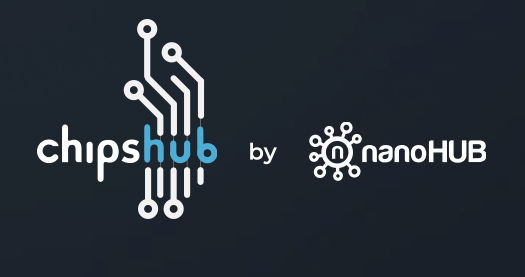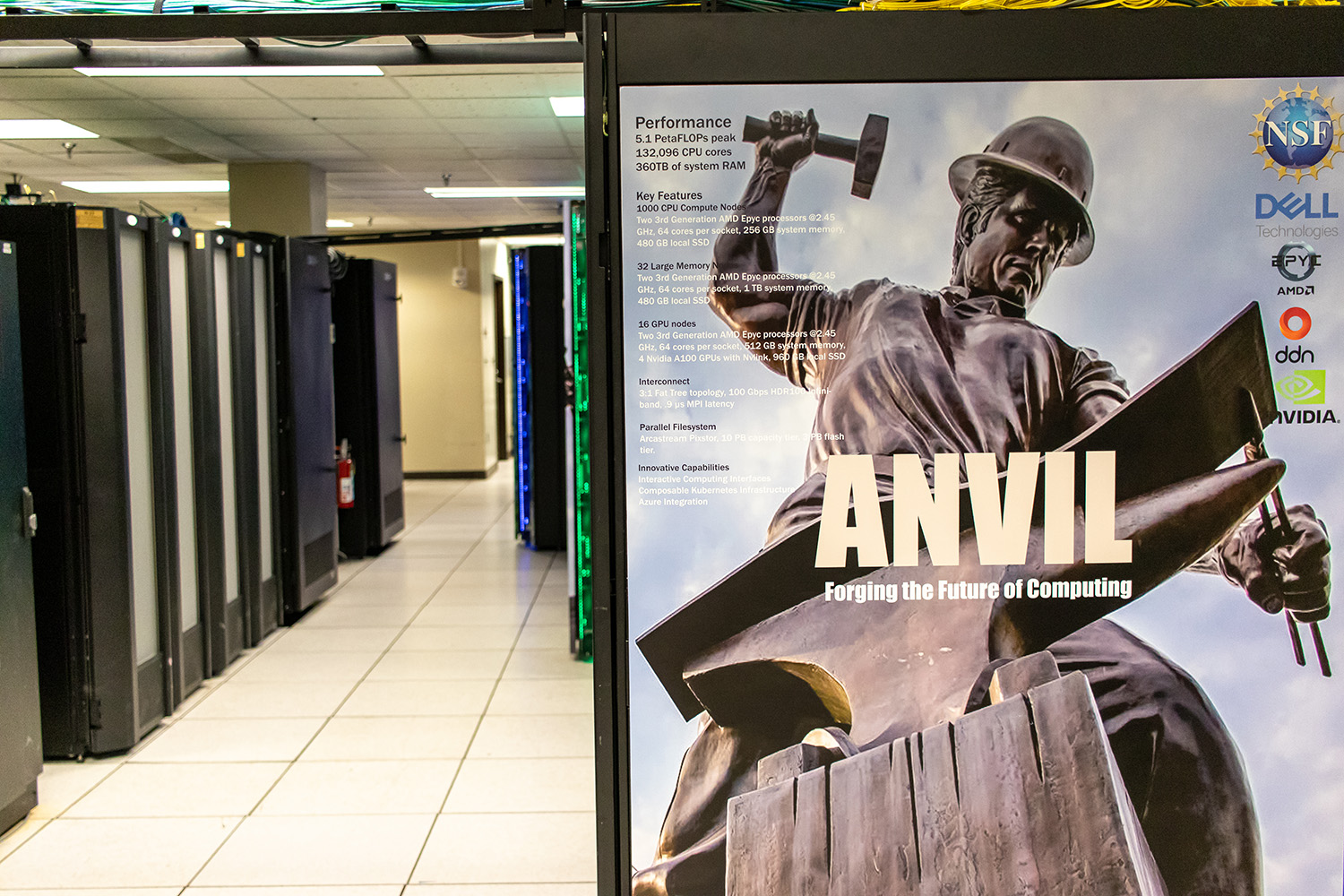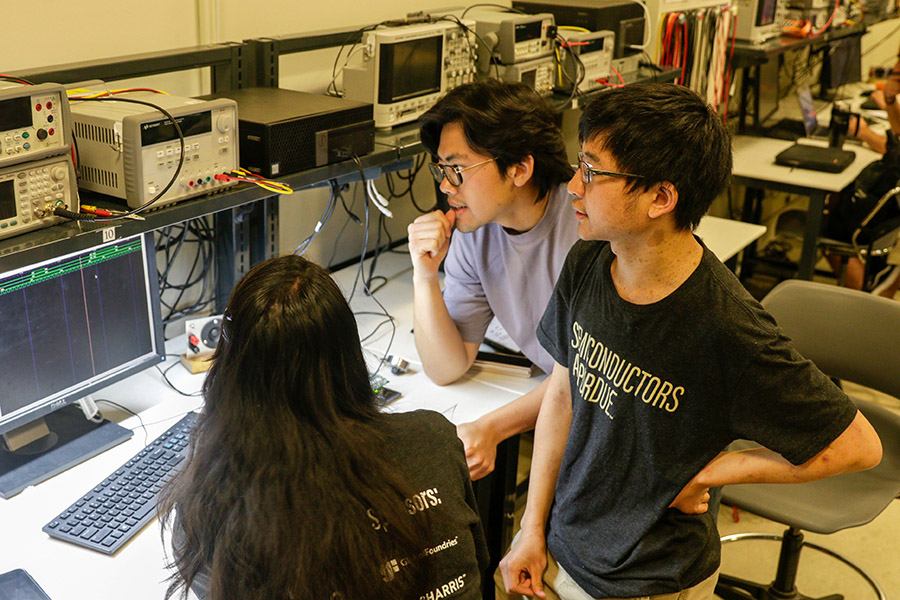Chipshub and Anvil union is a proven success for semiconductor workforce development
Chipshub, the online platform for everything semiconductors, has finally arrived. After a massive development effort from the nanoHUB team, and with help from the staff at the Rosen Center for Advanced Computing (RCAC), the online platform delivered advanced simulation software to the Purdue Summer Training, Awareness, and Readiness for Semiconductors (STARS) program, a huge step forward for semiconductor workforce development in the U.S.
Chipshub is powered  by nanoHUB, the first end-to-end platform for online scientific simulations. Initially supported by the National Science Foundation (NSF), nanoHUB hosts an ever-expanding list of simulation and data tools. Examples include easy-to-use apps that connect to powerful simulations for education in subjects like semiconductor devices, materials, and machine learning, and open courses and free textbooks on topics like nanotransistors, current flow, multiscale materials modeling, and nano-thermal flow theory. The best part? All that’s needed to access these tools is a web browser and an internet connection.
by nanoHUB, the first end-to-end platform for online scientific simulations. Initially supported by the National Science Foundation (NSF), nanoHUB hosts an ever-expanding list of simulation and data tools. Examples include easy-to-use apps that connect to powerful simulations for education in subjects like semiconductor devices, materials, and machine learning, and open courses and free textbooks on topics like nanotransistors, current flow, multiscale materials modeling, and nano-thermal flow theory. The best part? All that’s needed to access these tools is a web browser and an internet connection.
“Chipshub extends nanoHUB’s success to deliver both open-source and commercial software that supports a semiconductor community through workforce development at scale,” said Gerhard Klimeck, Chipshub co-director, Elmore Professor of Electrical and Computer Engineering and Riley Director of the Center for Predictive Devices and Materials and the Network for Computational Nanotechnology. This expansion is strongly aligned with the CHIPS and Science Act and has been supported by NSWC Crane, Purdue Applied Research Institution, and the Silicon Crossroads Microelectronics Commons.
An often overlooked aspect  of any successful online platform is the “at scale” piece. In order to support advanced simulations for large user groups, Chipshub partnered with RCAC and utilized the Anvil supercomputer. Anvil, also funded by the NSF, is Purdue’s most powerful high-performance computing (HPC) system. Using Anvil’s Composable Subsystem, a Kubernetes-based private cloud platform, Chipshub can dynamically scale simulation tools and semiconductor chip design software based on user demand. Tool sessions can be accessed anywhere via a web browser, allowing users to remotely utilize Anvil’s high-performance computing resources from their laptops or workstations. On a laptop or personal computer, simulation tools such as the ones provided by Chipshub can take hours to days—sometimes even weeks—to run a single simulation. But, by hosting these tools on Anvil and providing access via the cloud, Chipshub can deliver the power of HPC to hundreds of users at once and significantly cut down time spent waiting for results. This ability to compute at scale allows Chipshub to drive semiconductor workforce development throughout the nation without having to limit classroom size.
of any successful online platform is the “at scale” piece. In order to support advanced simulations for large user groups, Chipshub partnered with RCAC and utilized the Anvil supercomputer. Anvil, also funded by the NSF, is Purdue’s most powerful high-performance computing (HPC) system. Using Anvil’s Composable Subsystem, a Kubernetes-based private cloud platform, Chipshub can dynamically scale simulation tools and semiconductor chip design software based on user demand. Tool sessions can be accessed anywhere via a web browser, allowing users to remotely utilize Anvil’s high-performance computing resources from their laptops or workstations. On a laptop or personal computer, simulation tools such as the ones provided by Chipshub can take hours to days—sometimes even weeks—to run a single simulation. But, by hosting these tools on Anvil and providing access via the cloud, Chipshub can deliver the power of HPC to hundreds of users at once and significantly cut down time spent waiting for results. This ability to compute at scale allows Chipshub to drive semiconductor workforce development throughout the nation without having to limit classroom size.
“The Anvil Composable subsystem is one of the innovative features of the Anvil supercomputer,” says RCAC Chief Scientist Carol Song, principal investigator and project director for Anvil. “It was designed to complement the HPC batch computing system to support a wide range of modern scientific applications. The Chipshub is a perfect example of how the Anvil composable subsystem can provide on-demand computing power at scale through a seamless user experience."
For its inaugural real-world use case in the field of electronic design automation (EDA), Chipshub was utilized by the 2024 STARS summer program. STARS is an eight-week, on-site program offered by Purdue University’s College of Engineering. The program is designed to teach undergraduate students deep-tech skills in integrated circuit design, fabrication, packaging, and semiconductor device and materials characterization. One of the two specialized tracks offered by the STARS program was semiconductor chip design. Led by Dr. Mark C Johnson, the chips design track required extensive use of advanced software packages to give students experience in designing, verifying, and submitting a digital integrated circuit for fabrication. Nearly 60 students, including 13 students from the SCALE (Scalable Asymmetric Lifecycle Engagement) workforce development program, were enrolled in the chips design course. It would be nearly impossible for each student to get hands-on experience of semiconductor simulation software using traditional computing resources, but thanks to the support provided by the Chipshub-Anvil collaboration, the course was a huge success. Per Dr. Johnson, “Chipshub proved itself as each member of the STARS cohort were concurrently running simulations, producing chip layouts, and running physical verification continuously for the final three weeks of STARS. Collectively, 12 teams of four to five students each produced a chip design that has been combined into a single layout and will be submitted in September, 2024 for fabrication.” Chipshub and Anvil powered 1,800 simulation sessions and 6,000 interactive hours.

Over the next five years, Chipshub is expected to impact more than 200,000 U.S. engineering students and about 50,000 designers. Now that it has been successfully used with the STARS program, the next steps involve expanding Chipshub access beyond Purdue and making the platform available throughout the country. This would be a boon for the nation, allowing other institutions to utilize these state-of-the-art tools without having to reinvest in the development time and resources already taken on by the Chipshub team.
“There's currently a national effort to reshore a significant chunk of the semiconductor industry—we want to make more chips in the US.” Alejandro (Ale) Strachan, Chipshub co-director and Reilly Professor of Materials Engineering. “We want to fabricate them and design them. So there's a need for workforce development in this area. We need to have more engineers, more technicians, more PHDs that are able to work in this field. And so students need to be trained with cutting edge tools, and this is what Chipshub can actually do, at scale.”
To learn more about the Chipshub platform, please visit: https://chipshub.org/
More information about the Anvil supercomputer is available on Purdue’s Anvil website.
Purdue’s nanoHUB is funded under NSF award No. EEC-1227110, and Anvil is funded under NSF award No. 2005632.
Written by: Jonathan Poole, poole43@purdue.edu
